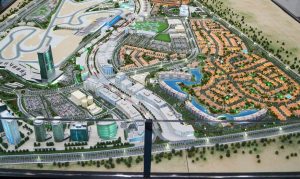Connect mobile devices to cellular networks, enabling wireless communication and powering the telecommunications industry's growth.
Introduction
In the world of modern telecommunications, Radio Access Networks (RAN) are a critical component that facilitates wireless connectivity. RANs play a vital role in ensuring that mobile devices can access and use cellular networks efficiently. In this article, we will delve into the purpose and usage of RANs, discuss three common types of RAN architectures, explore important considerations in RAN design, and provide answers to the top 10 frequently asked questions about RANs.
Purpose of Radio Access Networks (RAN)
The primary purpose of a Radio Access Network (RAN) is to provide the wireless connection between mobile devices, such as smartphones and tablets, and the core network of a telecommunications service provider. RANs act as a bridge, enabling seamless communication and data transmission over cellular networks.
Usage of Radio Access Networks (RAN)
RANs are employed in various scenarios to ensure wireless connectivity, including:
1. Mobile Networks: RANs are integral to mobile networks, allowing users to make voice calls, send text messages, and access data services.
2. Internet of Things (IoT): RANs are crucial for connecting a wide range of IoT devices, from smart meters to connected vehicles and industrial sensors.
3. Broadband Wireless Access: RANs support broadband wireless access services, enabling high-speed internet connections in both urban and rural areas.
Revolutionize Connectivity With A Future-Ready Radio Access Network
Three Types of RAN Architectures
1. Macro Cell RAN: These are large, high-power base stations that cover extensive geographical areas. They are commonly used in urban and suburban environments.
2. Small Cell RAN: Small cells are lower-power, compact base stations deployed in densely populated areas or indoor locations to enhance network capacity and coverage.
3. Distributed Antenna System (DAS): DAS uses a network of antennas and remote radio heads to distribute wireless signals across large indoor or outdoor spaces, like stadiums and airports.
Important Considerations in RAN Design
Effective RAN design is crucial to ensure optimal network performance and user experience. Some key considerations include:
1. Coverage and Capacity: Balancing network coverage with capacity to meet user demand in various locations.
2. Interference Management: Addressing interference issues to maintain signal quality and data throughput.
3. Spectrum Allocation: Efficient allocation of frequency spectrum to different network technologies and services.
4. Backhaul Connectivity: Ensuring reliable backhaul connections to transport data between RAN and the core network.
5. Scalability and Future-Proofing: Designing RANs that can evolve with technological advancements and growing user requirements.
Conclusion
Radio Access Networks (RAN) are the backbone of modern wireless telecommunications, enabling the seamless connectivity that we rely on in our everyday lives. Understanding the purpose, usage, and types of RANs, as well as considering critical design elements, is essential for providing efficient and reliable wireless services. As technology continues to advance, RANs will play a pivotal role in shaping the future of wireless communication.
Evolve Connectivity: Optimize with Our Expertise!
Unlock the potential of your network with DC-PRO’s Radio Access Networks (RAN) consultancy services. From seamless integration to cutting-edge optimizations, our experts ensure your connectivity reaches new heights.



















